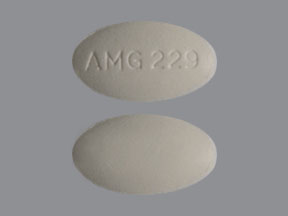
Tranexamic Acid Coupons & Savings Card – Discount Prices from $32.58
Generic for: Lysteda
My prescription
Edit
650MG, Tranexamic Acid (30 Tablets)
Select pharmacy

CVS
$32.58
COUPON PRICE
Walgreens
$41.40
COUPON PRICE
Walmart
$44.36
COUPON PRICE
Albertsons
$47.02
COUPON PRICETranexamic Acid savings card
Show this card to your pharmacist
CVS
$32.58
BIN
ID
PCN
GRP
019876
LH12B937DA
CHIPPO
LHX
Powered by
More prescriptions for hemorrhage
More prescriptions for hemorrhage
Tranexamic Acid dosage forms
Dosage Quantity Price from Per unit 650MG 30 Tablets $32.58 $1.09 650MG 1 Tablet $1.01 $1.01 650MG 15 Tablets $25.20 $1.68
| Dosage | Quantity | Price from | Per unit |
|---|---|---|---|
| 650MG | 30 Tablets | $32.58 | $1.09 |
| 650MG | 1 Tablet | $1.01 | $1.01 |
| 650MG | 15 Tablets | $25.20 | $1.68 |
Tranexamic Acid Warnings
It is crucial to be aware of the safety information and warnings associated with the use of tranexamic acid (Lysteda). Please read the following details carefully and discuss any concerns with your healthcare provider:
Risk of Blood Clots: Tranexamic acid (Lysteda) can increase the likelihood of developing blood clots. This risk is particularly elevated for individuals using combined hormonal birth control, which is already associated with increased clotting risks. Therefore, tranexamic acid (Lysteda) should not be used if you are taking combined hormonal contraceptives. Additional risk factors include a history of blood clots, use of medications that raise clot risks, obesity, smoking (especially for women over 35), and certain pre-existing medical conditions.
Vision and Eye Issues: Some patients have reported experiencing eye problems, such as alterations in eye appearance or vision changes, potentially due to blood clots affecting blood flow to the eyes. If you notice any changes in your eyesight while taking tranexamic acid (Lysteda), discontinue use and consult your healthcare provider immediately. You may need to see an eye specialist for further evaluation.
Severe Allergic Reactions: Although rare, severe allergic reactions to tranexamic acid (Lysteda) can occur. Symptoms include difficulty breathing, tightness in the throat, facial flushing, and other signs of anaphylaxis. If these symptoms arise, seek emergency medical assistance immediately by calling 911.
Contraindications: This medication should not be used if you have any of the following conditions due to the potential for serious health risks:
- Use of combined hormonal birth control.
- Current or past blood clot incidents (such as deep vein thrombosis, pulmonary embolism, stroke, or clots in the eyes).
- Certain medical conditions that elevate the risk of blood clots.
If any of these contraindications apply to you, consult your healthcare provider before using tranexamic acid (Lysteda).
Tranexamic Acid Side Effects
Common side effects:
- Headaches
- Runny or stuffy nose
- Congestion
- Back pain
- Stomach pain
Less common but important to monitor:
- Muscle, bone, or joint pain
- Muscle cramps or spasms
- Migraines
- Tiredness
- Anemia
Serious side effects:
- Severe allergic reactions
- Blood clots
- Changes in vision or eye problems
Tranexamic Acid Interactions
When taking tranexamic acid, it's important to be aware of potential interactions with other medications that could increase the risk of serious side effects. Notably, combining tranexamic acid with hormonal contraceptives, such as birth control pills, patches, or rings, is generally not recommended. This combination can elevate the risk of developing blood clots, which may lead to conditions like deep vein thrombosis or pulmonary embolism.
Additionally, using tranexamic acid alongside certain clotting factor concentrates, including anti-inhibitor coagulant complexes and Factor IX complex concentrates, is discouraged. This combination may further increase the likelihood of thrombosis, a condition where blood clots form in blood vessels.
If you're undergoing treatment with tissue plasminogen activators, medications that help dissolve blood clots, it's advisable to avoid concurrent use of tranexamic acid. Combining these drugs can reduce the effectiveness of the clot-dissolving treatment.
For individuals with acute promyelocytic leukemia who are taking all-trans retinoic acid, using tranexamic acid is not recommended. This combination may enhance the procoagulant effects of the retinoic acid, increasing the risk of clot formation.
It's also important to note that combining tranexamic acid with Warfarin, a common anticoagulant, may reduce the effectiveness of both medications. This interaction could potentially lead to inadequate blood clot prevention or control.
Before starting tranexamic acid, inform your healthcare provider about all medications, supplements, and herbal products you're currently using. This will help them assess potential interactions and determine the safest and most effective treatment plan for you.
